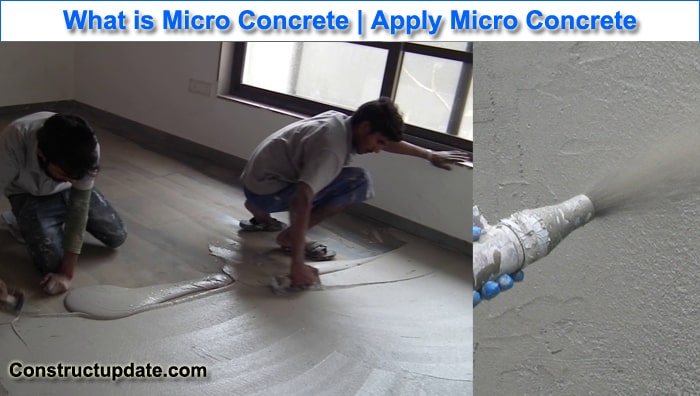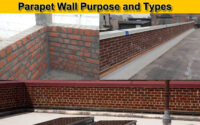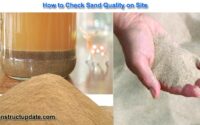Micro Concrete | Application | Benefits of Microconcrete | Uses of Micro Concrete
What is micro concrete?
Micro concrete is a thin (about 2-3mm) cement-based coating that can be applied to a variety of surfaces, including tile and wood. It has the appearance and feel of concrete but at a fraction of the cost and weight. Micro concrete, also known as microconcrete or MicroConcrete, is an excellent choice for bathrooms and kitchens since it is hygienic and stain-resistant. Furthermore, the material is non-slip and mold-resistant, making it an excellent choice for indoor and outdoor floor surfaces.

Application of Micro Concrete:
- Repair damaged reinforced concrete parts such as beams, columns, walls, and other structures when access is limited and compaction is impossible.
- Jacketing RCC columns in order to boost load-carrying capability
Advantages of micro concrete:
Micro concrete has many advantages over conventional concrete. These include the following:
- No compaction is required, hence no heavy machinery is required.
- It has a low permeability, so it may be used outside as well as in kitchens and baths.
- It adheres to practically any surface.
- It is powerful nearly immediately after application.
- It is chloride-free, making it a safe and long-lasting surface.
- There will be no fractures or folds because it will not shrink when used.
How is micro concrete used?
Micro concrete has been employed in a variety of residential and commercial applications. It has been utilised for kitchen worktops and shelves because it has a seamless, sturdy, and modern appearance.
It’s long-lasting and simple to apply to both internal and external surfaces. It’s an excellent choice for anyone wishing to give a durable concrete effect to their floors or walls at a low cost. It is also a waterproof material, making it an excellent choice for bathroom and kitchen splashbacks.
How Is It Different from Conventional Concrete?
Micro concrete has various unique characteristics that set it apart from normal concrete. Some of them are discussed farther below:
1. Easy to Handle and Place
Because it is accessible in prepackaged mix condition, it does not require specialised personnel or any machine to prepare and place. Because no concrete mixing is necessary on site, human error problems are eliminated, and micro concrete is the optimum surface material for fake concrete finishing in any environment.
Regular concrete requires the use of a little excavator to excavate 4-6 inches before pouring, whereas micro concrete does not require any excavating.
As a result, when it comes time to renovate the house and excavate walls, it will be more accessible.
2. Less Water Demand
Micro concrete does not take much water to mix; in fact, it is made in such a way that it uses less water than ordinary concrete.
The water to concrete ratio needed to make micro concrete is 1:8. Pumping is not necessary for micro concrete, hence no heavy machinery is required. As a result, the cost is reduced. Micro concrete is watertight after drying, although ordinary concrete is not.
3. Dries Up Fast
Micro concrete, unlike ordinary concrete, dries quickly, allowing the covered surface to be used within a day. As a result, designers prefer micro concrete so much that they don’t mind waiting many days.
Micro concrete is the greatest solution for projects that must be completed in a short amount of time with minimal disruption to the work environment.





